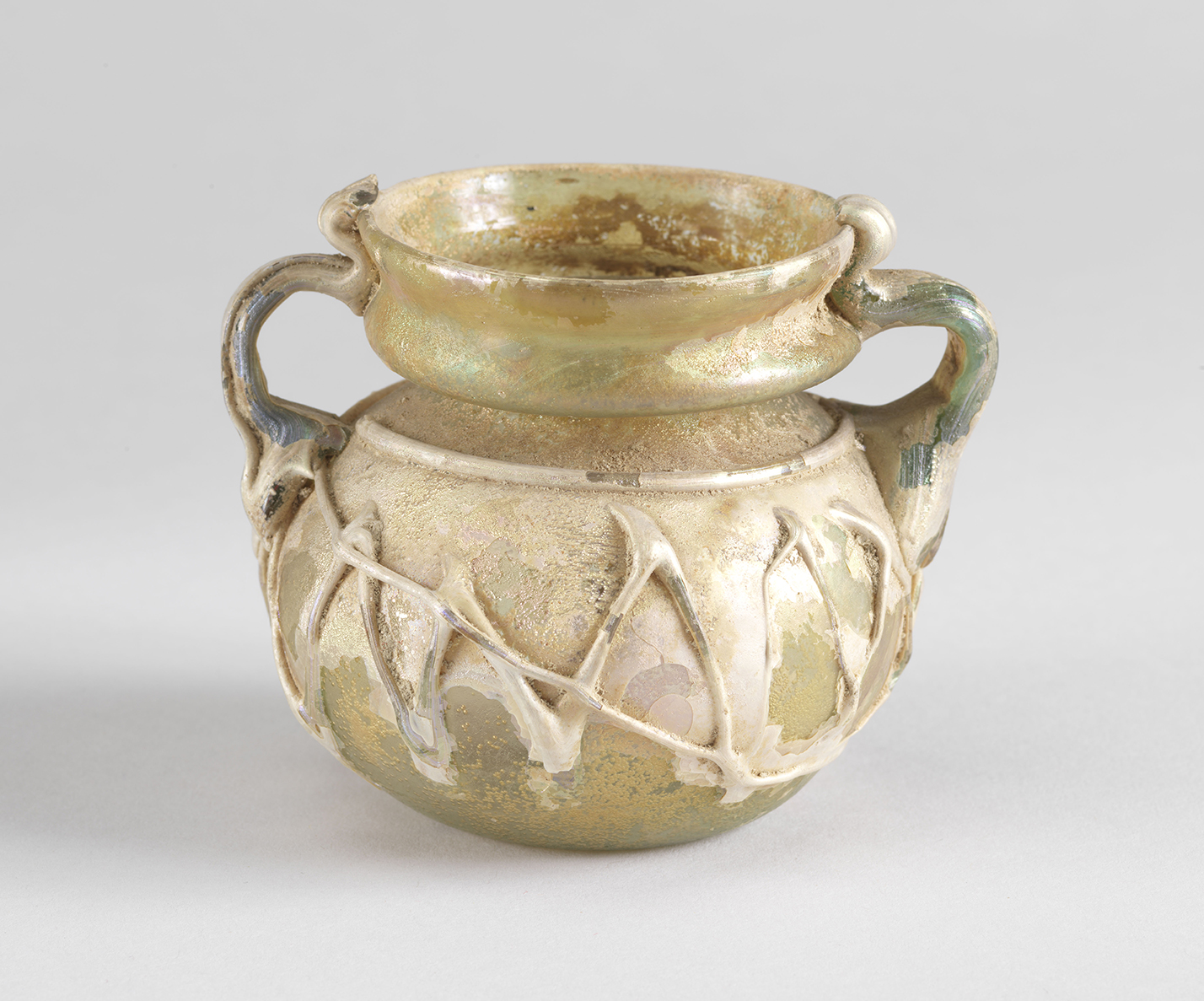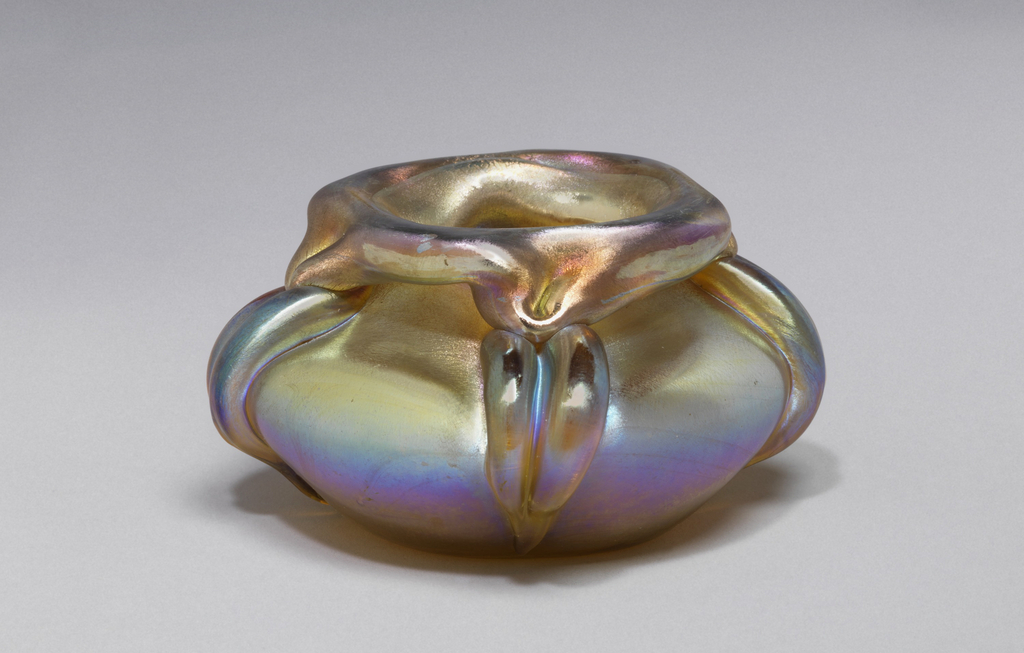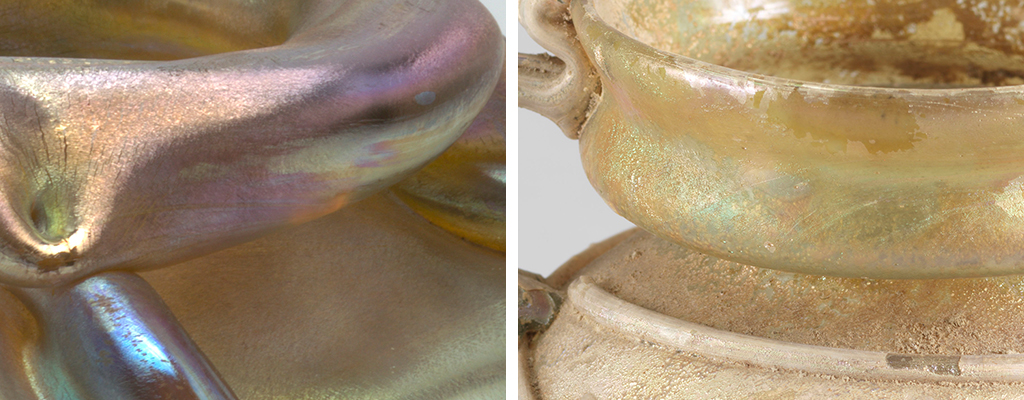The United Nations has designated 2022 the International Year of Glass. Cooper Hewitt is celebrating the occasion with a yearlong series of posts focused on the medium of glass and museum conservation.
It exists all around us, but we look right through it . . .
This may sound like a riddle, but these words accurately describe glass and its ubiquitous presence in our surroundings. At Cooper Hewitt, our glass collections range from ancient to cutting-edge contemporary and represent a broad range of technologies developed for use with this medium. As conservators, we love looking at our glass objects and working on them in the conservation lab when necessary. This blog series will feature a different topic each month, celebrating the museum’s glass holdings in conjunction with the United Nations’ International Year of Glass in 2022. Written primarily by members of the museum’s Conservation department, the series will cover topics in the design of glass across history, technology, and cultures.

Jar (Eastern Mediterranean), 4th–5th century; Glass; H x W: 7 x 10 cm (2 3/4 x 3 15/16 in.); Gift of Mrs. Leo Wallerstein, 1961-88-7

Vase, ca. 1895–96; Produced by Tiffany Glass and Decorating Company (New York, NY, USA); Design Director: Louis Comfort Tiffany (American, 1848–1933); Glass; H x diam.: 6 x 9 cm (2 3/8 x 3 9/16 in.); Gift of Anonymous Donor, 1952-166-33
We begin our exploration with an example of modern glass imitating archaeological glass (material buried underground for a significant period of time) as achieved through a deep understanding of materials and extensive experimentation. This ancient Roman jar and modern Tiffany vase were featured in Cooper Hewitt’s exhibition Iridescence (on display July 2018–October 2019), which presented examples of naturally occurring as well as manufactured iridescence on decorative objects. Both pieces are examples of blown glass, a revolutionary technology developed along the Levantine coast of the Mediterranean Sea during the 1st century BCE. This method of forming glass relies on a hollow pipe through which a glass worker blows in order to inflate the heated and molten material. This new technique allowed for extremely efficient production of glass vessels, which changed the way people ate and drank and supported a robust trade in goods across the Mediterranean and beyond during the Roman period until the fifth century CE.
Both pieces were free blown, meaning that the hot glass was inflated without the use of a mold during its manufacture. In each case, the glass worker used tools to pinch in the neck, creating a narrow collar that opens to form a wider mouth at the top of the piece. The pieces were also decorated with added glass—so-called “trails” on the Roman example forming zigzags and vertical ribs on the Tiffany vase. Handles were added in a similar fashion on the ancient jar when the vessel was still warm, thereby reducing the stress caused by the heat differential between the additions and the rest of the formed piece.

Detail of vase and jar rims.

Detail of vase rib and jar arm.
Though the shape and forming of the pieces are similar, the visual appearance of their surfaces differ. Archaeological glasses, damaged from contact with water during burial underground for long periods of time, often show layers of flaky deteriorated glass on their surfaces. The Roman glass appears opaque and iridescent because these thin and brittle layers refract light, causing the creation of colors of varying intensity. Modern artists and artisans appreciated this unintended iridescence. Arthur Nash, who worked for artist and designer Louis Comfort Tiffany in the late 19th and early 20th centuries, worked hard to find a way to replicate this surface phenomenon. He was ultimately successful, relying on a special surface treatment using metal oxides and a specific furnace environment to cleverly imitate the effect. This glass was wildly popular at the time of its original manufacture and continues to be for collectors of Tiffany glass today. Glass scientists are still studying its remarkable material properties.
Sarah Barack is Senior Objects Conservator and Head of Conservation at Cooper Hewitt.